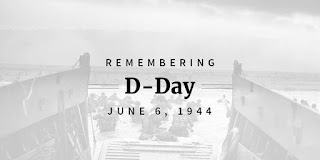By Douglas V. Gibbs
Author, Speaker, Instructor, Radio Host
D-Day marked a decisive turning point in World War II. Less than a year later, on May 7, 1945, Nazi Germany signed an unconditional surrender.
All five beaches on the Normandy Coast were secured by Allied forces by June 11.
Originally planned for May, bad weather pushed the invasion to June. The invasion, officially called "Operation Overlord," combined the forces of 156,115 U.S., British and Canadian troops, 6,939 ships and landing vessels, and 2,395 aircraft and 867 gliders that delivered airborne troops. The paratroopers struck first, carrying out an operation that had been in planning for months. Initially, a plan called “Operation Sledgehammer” targeted northwest France's ports as early as 1943, but the allied leadership decided to invade an easier target, Northern Africa, first. They then worked on attacking Europe’s “soft underbelly” through Italy. Eventually, it was realized that if the war was to be won, an invasion of France would also be necessary.
-- Political Pistachio Conservative News and Commentary



No comments:
Post a Comment